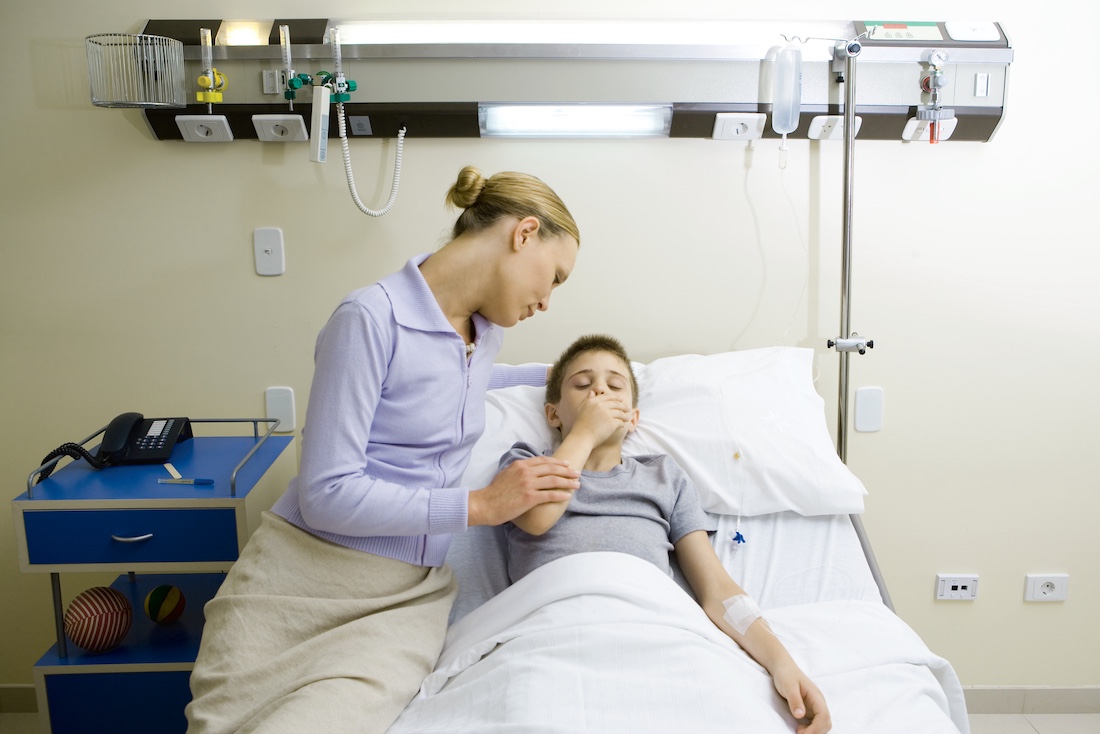UTSW Research: Anaphylaxis hospital stays, LDL-lowering drug, and more
Studies look at children’s ED visits, a new class of medication, and a treatment for urothelial carcinoma

Shorter hospital stays safe for most children with anaphylaxis
Up to 5% of the U.S. population has experienced anaphylaxis – a severe allergic reaction triggered by foods, medications, insect stings, or other causes. Children with this reaction typically receive care in a hospital emergency department (ED), where they’re treated with an injection of epinephrine and kept for observation in case they need a second shot or further treatment. But how long children should remain before safely leaving the hospital has been unclear.
A team of researchers including UT Southwestern Medical Center Pediatrics faculty members Jo-Ann Nesiama, M.D., Professor, and Geetanjali Srivastava, M.D., M.P.H., Associate Professor, collected data on 5,641 ED visits for pediatric anaphylaxis between 2016 and 2019 from 30 hospitals in the U.S. (including Children’s Health) and one in Canada. Their findings, reported in The Lancet Child & Adolescent Health, showed that 95% could safely leave the ED after two hours, and 98% could safely go home four hours after one epinephrine dose, with the longer observation sometimes necessary for children with cardiovascular symptoms.
These results suggest the vast majority of children with anaphylaxis don’t need lengthy hospital stays, the authors say.
Reducing LDL cholesterol with experimental drug
To decrease heart attacks, strokes, and other cardiovascular events, patients with prior heart disease and those at increased risk are recommended statins and other medications to reduce low-density lipoprotein cholesterol (LDL-C). Many patients taking these medications are unable to reach their treatment goals. The experimental drug obicetrapib is a new class of cholesterol-lowering medication that has shown promise in reducing LDL-C on top of other cholesterol-reducing therapies. However, its safety and efficacy had not been fully assessed.
In a phase three clinical trial published in the The New England Journal of Medicine, 1,686 participants considered at high risk of a cardiovascular event were randomized to receive obicetrapib in addition to cholesterol-lowering drugs they were taking, and 844 other participants were randomly assigned to receive a placebo. After 84 days, those who received the study drug experienced an average decrease in LDL of almost 30%, while those who received the placebo experienced a nearly 3% rise. Side effects were comparable between the groups. Another ongoing clinical trial, PREVAIL, is underway to determine if the medication will prevent heart attacks and strokes.
Ann Marie Navar, M.D., Ph.D., Associate Professor of Internal Medicine and Public Health at UT Southwestern, served on the steering committee for the study and is a co-author on the manuscript. She received personal compensation from Amgen.
Clinical trial supports new treatment for urothelial carcinoma
Urothelial carcinoma, a cancer that originates from cells lining the bladder and other parts of the urinary system, kills nearly 200,000 worldwide each year. A phase three clinical trial showed that a combination of two treatments, enfortumab vedotin (an antibody-drug conjugate) plus pembrolizumab (an immune checkpoint inhibitor), safely extended both progression-free survival (a measure of how long patients live without their cancer worsening) as well as overall survival in patients with this disease. However, these results included only about 1.5 years of data.
A multicenter team of researchers, including Waddah Arafat, M.D., Associate Professor of Internal Medicine at UT Southwestern, recently published new results in Annals of Oncology from the same trial following patients for about 2.5 years. Their findings showed the combined therapy nearly doubled median progression-free survival and more than doubled median overall survival in the 442 patients on this regimen compared with 444 who received chemotherapy instead. These positive results, along with new data confirming the regimen’s safety, reinforce this treatment as the new gold standard for urothelial carcinoma, the study’s authors say.
UT Southwestern’s Harold C. Simmons Comprehensive Cancer Center played a key role in the trial as the No. 2 enrolling site in the U.S. and No. 5 globally. This effort reflects UTSW’s commitment to advancing science and giving patients access to promising and cutting-edge therapies. The trial included patients from Simmons Cancer Center regional locations in the greater Dallas-Fort Worth area, led by Suzanne Cole, M.D., Associate Professor of Internal Medicine.
About UT Southwestern Medical Center
UT Southwestern, one of the nation’s premier academic medical centers, integrates pioneering biomedical research with exceptional clinical care and education. The institution’s faculty members have received six Nobel Prizes and include 25 members of the National Academy of Sciences, 24 members of the National Academy of Medicine, and 14 Howard Hughes Medical Institute Investigators. The full-time faculty of more than 3,200 is responsible for groundbreaking medical advances and is committed to translating science-driven research quickly to new clinical treatments. UT Southwestern physicians provide care in more than 80 specialties to more than 140,000 hospitalized patients, more than 360,000 emergency room cases, and oversee nearly 5.1 million outpatient visits a year.
